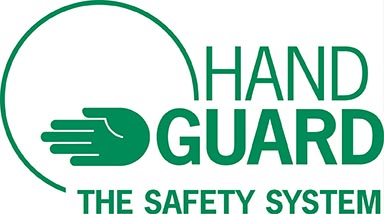DUE TO their design, sliding table saws are among the machine types with a high risk of injury. As a consequence, various manufacturers have taken on the development of safety assistance systems. But is there a system that not only mitigates injuries but also prevents them with a high degree of reliability? Fraunhofer IPA provides answers.
Up to 120 reportable accidents involving sliding table saws occur in Germany every month. The associated costs for lost work time and medical treatment are immense. An effective safety assistance system would bring important benefits to craft businesses as well as benefits to society as a whole. The Fraunhofer Institute for Manufacturing Engineering and Automation IPA in Stuttgart, Germany, has taken a close look at two current safety assistance systems - including the Altendorf Group’s HAND GUARD system, which was recently certified by the BGHM, the German Employers’ Liability Insurance Association for Wood and Metal.
The Fraunhofer IPA study is based on results for capacitive and camera-based safety assistance systems. Both principles use suitable sensors to first detect a hazardous situation and then remove the saw blade from the danger zone in the shortest possible time, thus preventing injury to the hand. Typical working speeds from practice were used in the investigations (0.2 m/s = slow working speed, up to 2.0 m/s = typical slipping speed).

Since most accidents with serious injuries occur during rapid hand movements in everyday work, special attention was paid to this. Among other things, capacitive systems react to the presence of human tissue. If a hazardous situation has been detected, the system triggers the safety function. However, due to its short sensor range and the associated triggering threshold located only a few millimeters in front of the saw blade, it only offers protection against serious injuries at slow working speeds. The camera-based system used in HAND GUARD, on the other hand, monitors a wide area around the saw blade. As soon as the camera system detects hands entering this space, the saw blade is lowered. This prevents fingers and hands from coming into contact with the source of injury in the first place. Even at approach speeds of 2 m/s, the system triggers in time and prevents injuries even in this case.
“Fraunhofer IPA has carried out measurements on different safety systems for sliding table saws: the two systems currently available on the market, capacitive and camera-based sensor technologies, were investigated. As a result, both the capacitive and the camera-based system reliably detected the test pieces under the selected test conditions and led to the lowering of the saw blades. However, only the camera-based system was able to avoid damage to the test specimens in all tests,” said Dr. Birenbaum, Group Manager Manufacturing Systems, Fraunhofer Institute for Manufacturing Engineering and Automation IPA.
Hearing this, Peter Schwenk, CEO of the Altendorf Group, a pioneer in the field of sliding table saws, is particularly pleased: “We are the world’s only supplier of sliding table saws to offer an AI- and camera-based safety assistance system on series machines. With the successful certification by the German Employers’ Liability Insurance Association for Wood and Metal, we are setting the future standard for safety in sliding table saws.”
See page 48 of our August/September 2023 issue on our Back Issues page.

